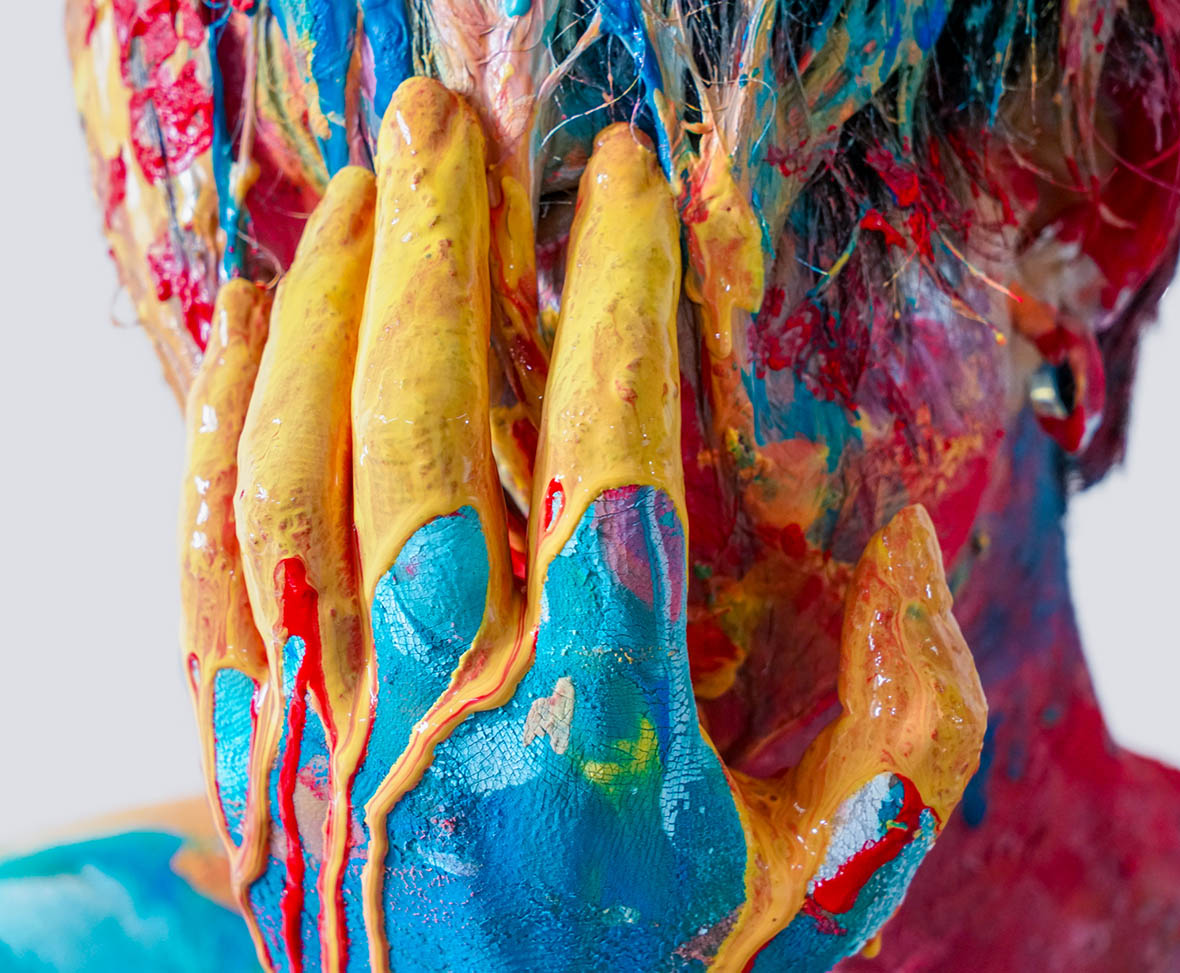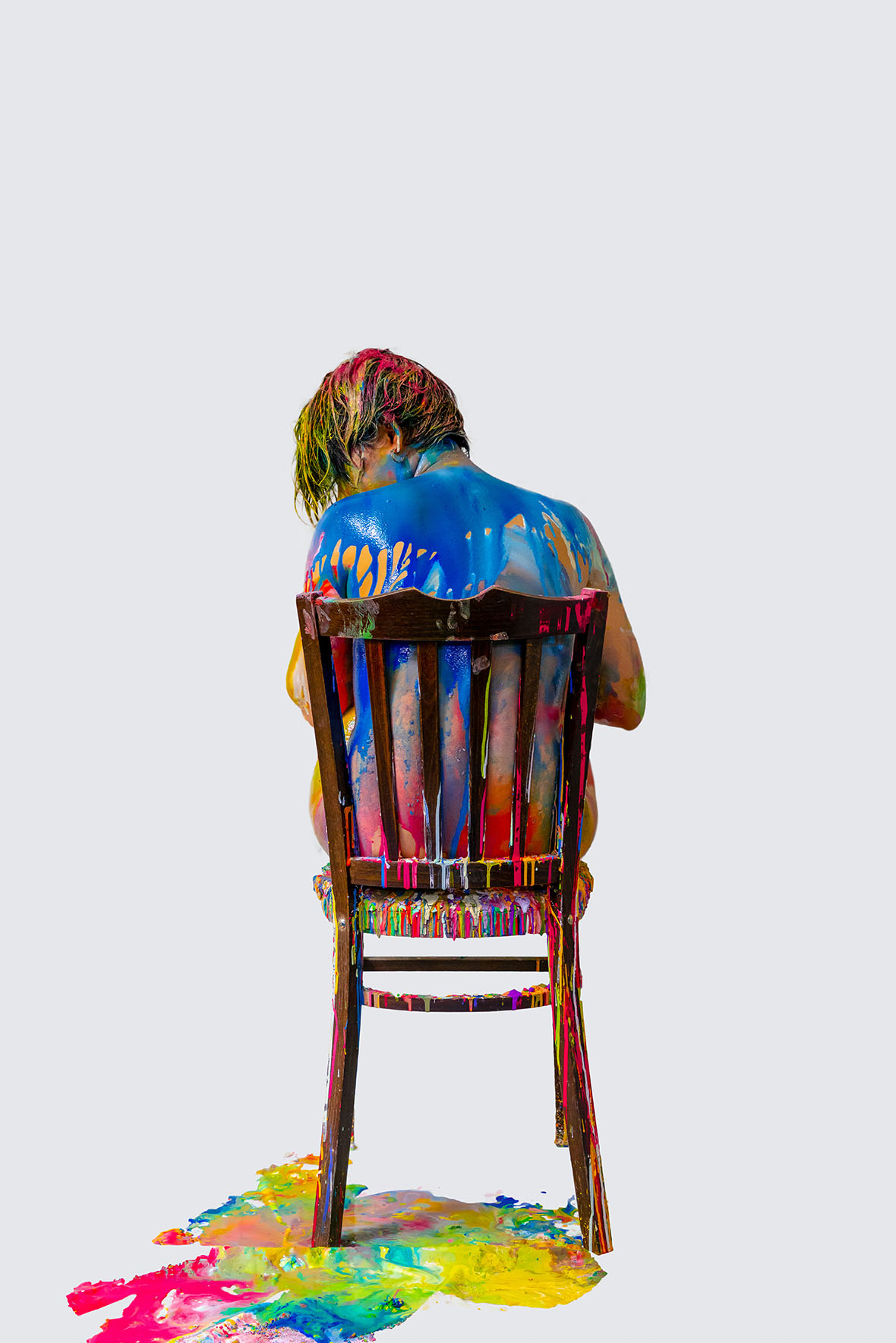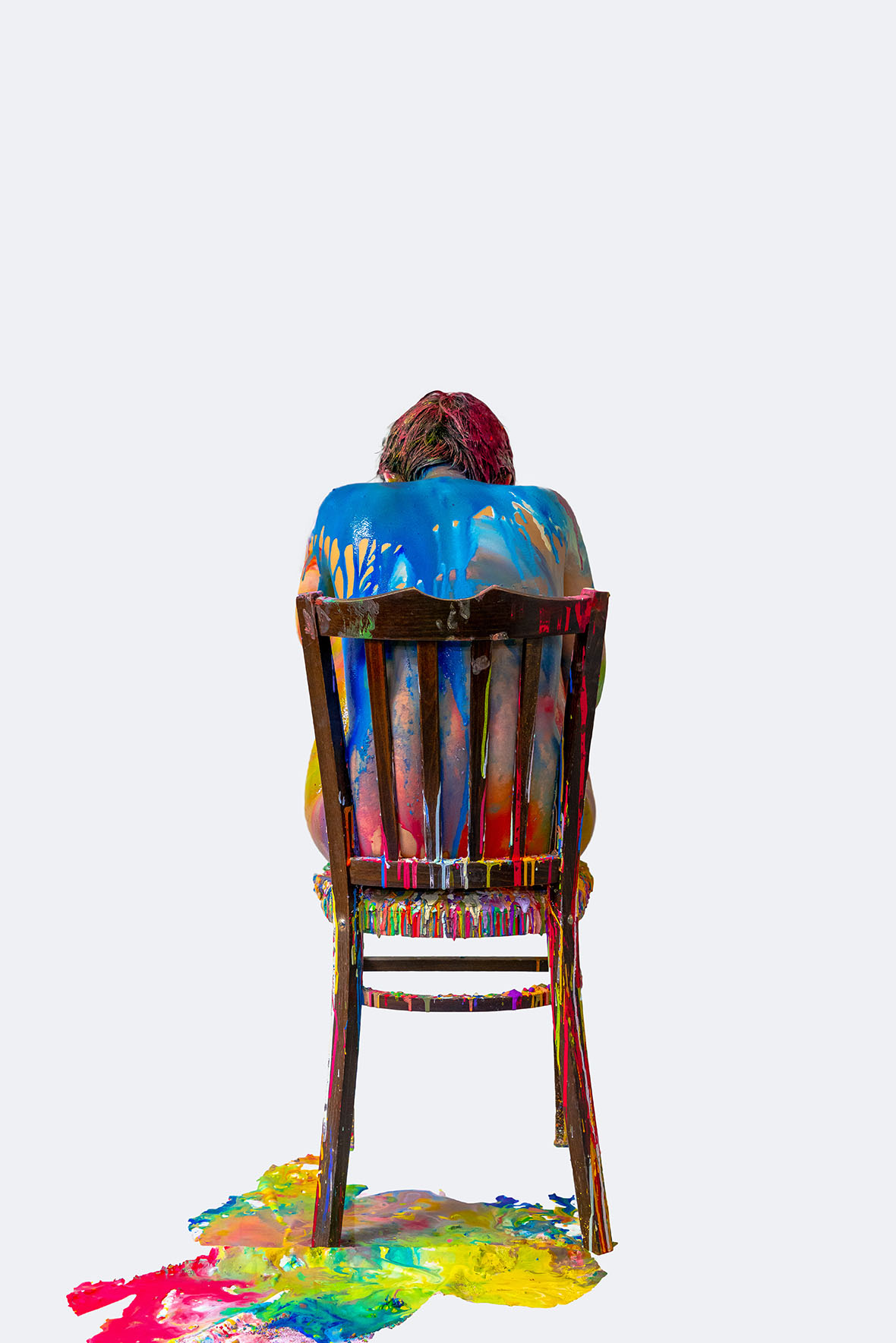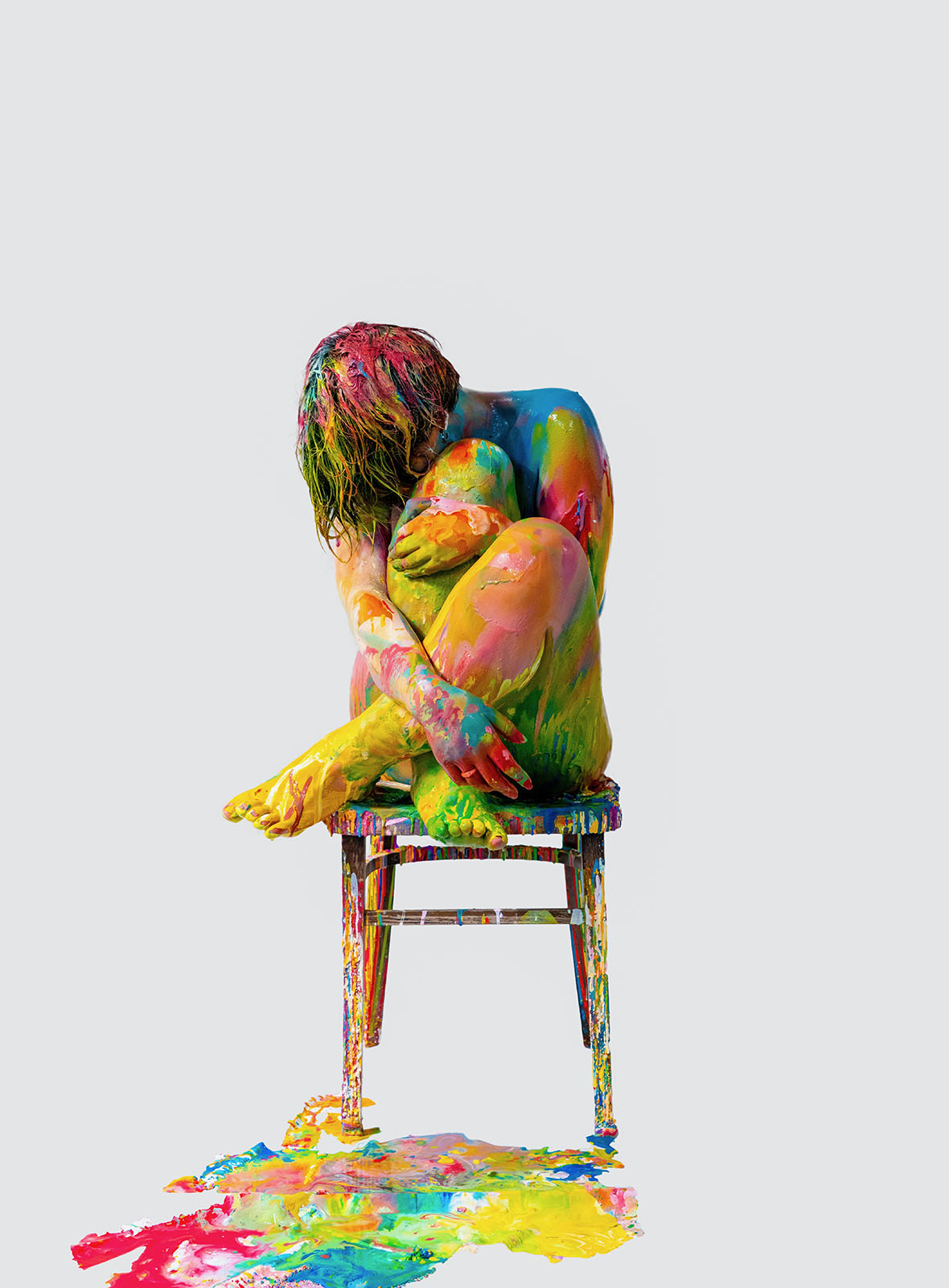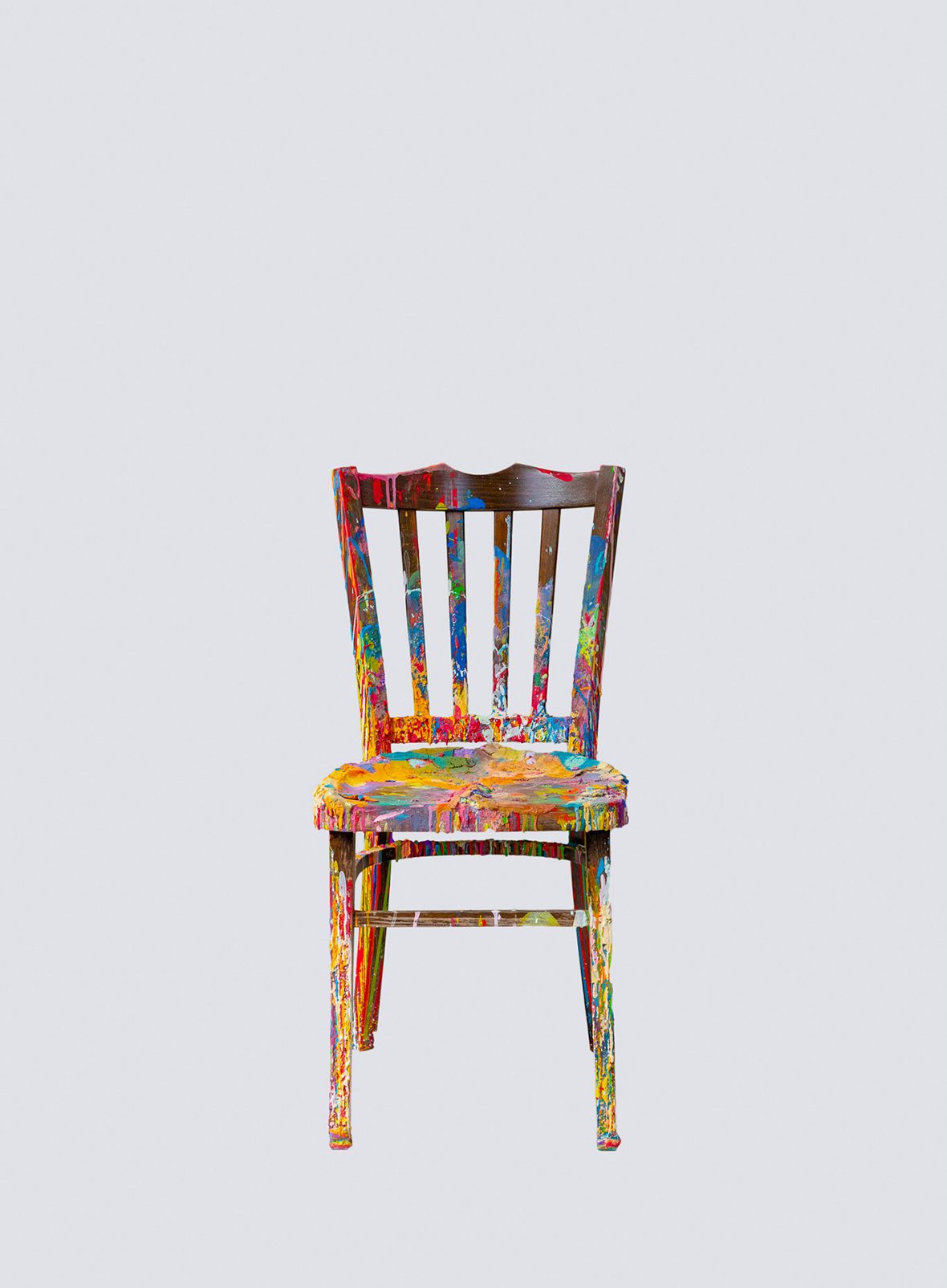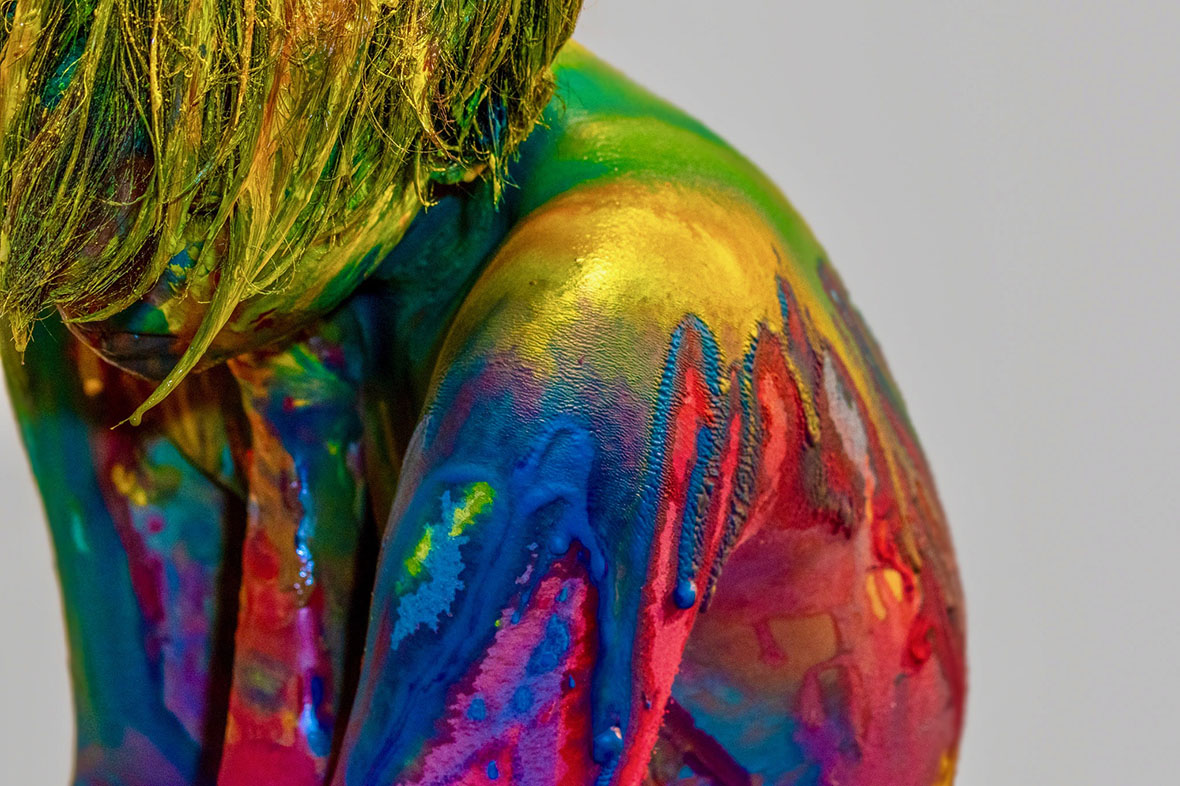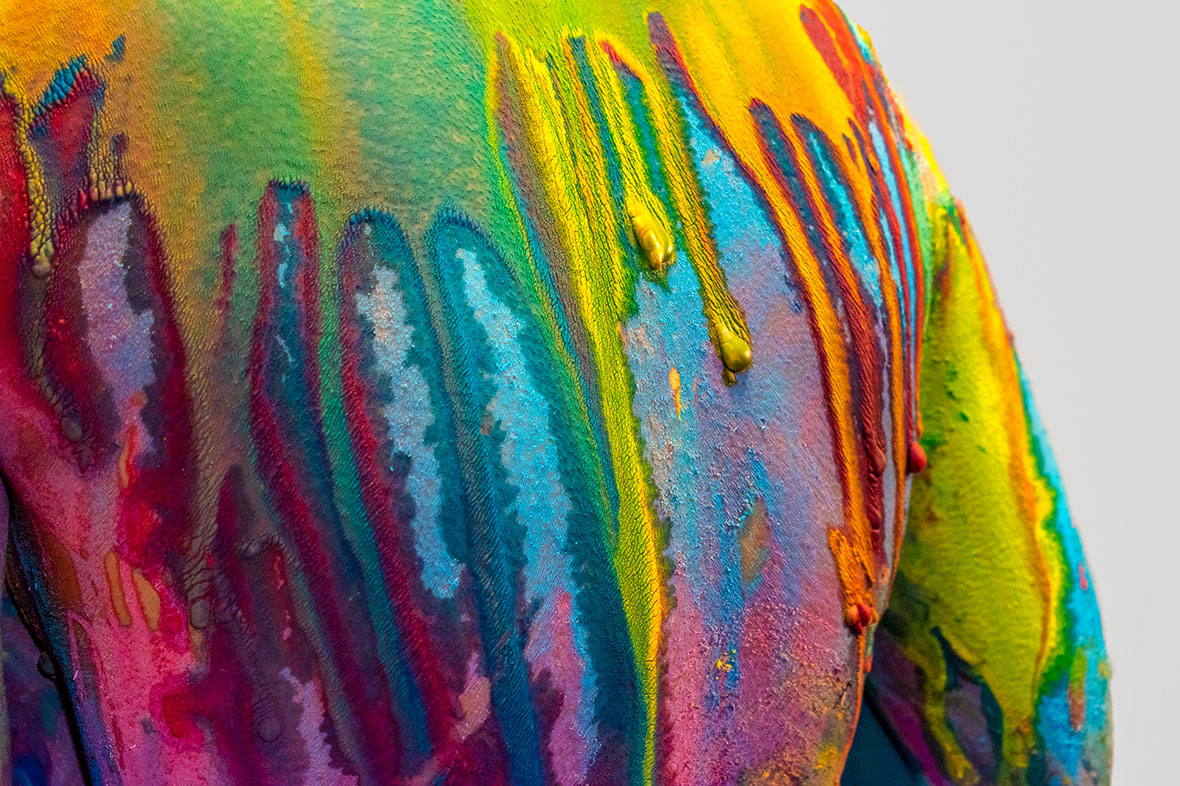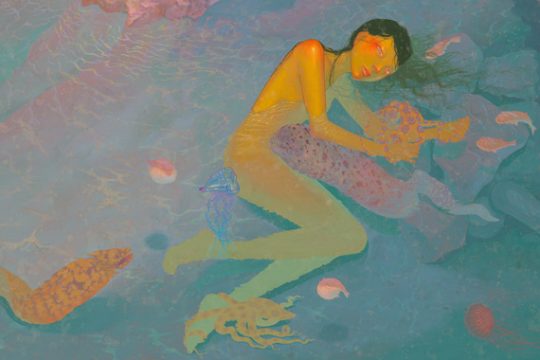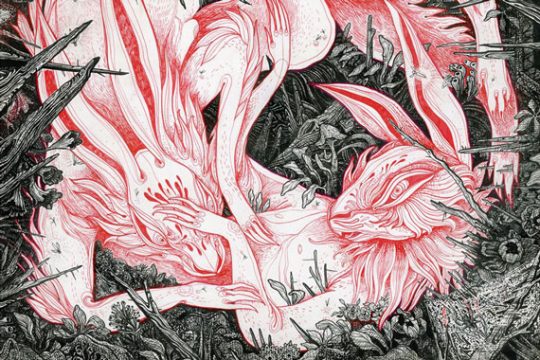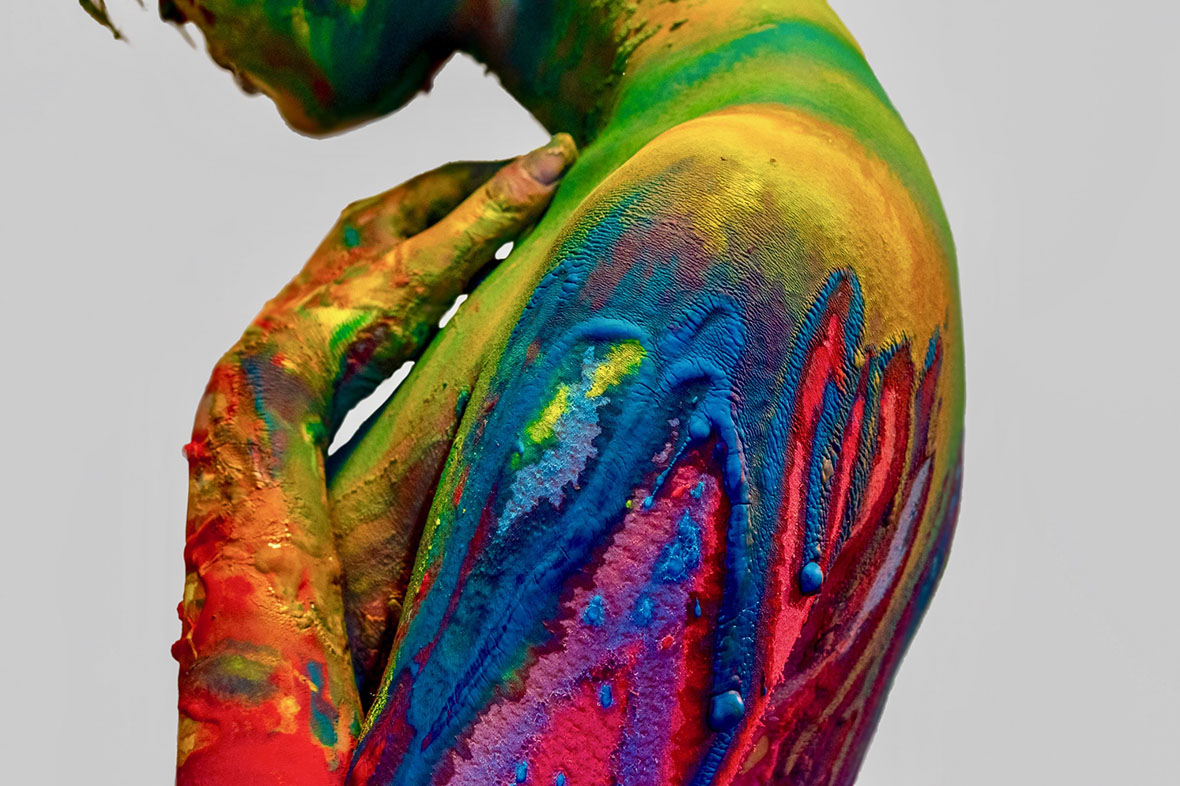
For Japanese artist Shintaku Kanako, her body is a canvas on which she can explore the meaning of life.
Her artistic beginnings can be traced back to high school when she participated in a group exhibition with a few fellow classmates. In an experimental, performative piece, they used their body as brushes to paint atop large paper canvases. This was the first time she experienced the sensation of paint on skin. “That was what inspired me to apply paint directly onto my body,” she recalls, “It was a moment of freedom, an affirmation of my existence. My skin felt wet, and the wind was chilling, but the magnificent colors that we made seemed to stretch as far as my eyes could see.”
对日本艺术家新宅加奈子(Shintaku Kanako)来说,创作意味着把自己当画布,而作品则指向生命存在的意义。
新宅加奈子的艺术生涯始于十年前,当时依然在读公立高中的她,和几个人一起组织了一次集体展览。她们衬着肯特纸,身着颜料,并和校园里的同学一起做了一些肢体绘画。作为一次实验性的行为艺术,这是她第一次让自己的身体接触颜料,“那是开启我后来在身上倾倒颜料作画的原因。”加奈子说道,“那一刻我感到非常自由,同时也第一次确认我还活着。我的皮肤感到湿冷,感到全身都刮起了风,目力所及之处有许许多多的颜色。”
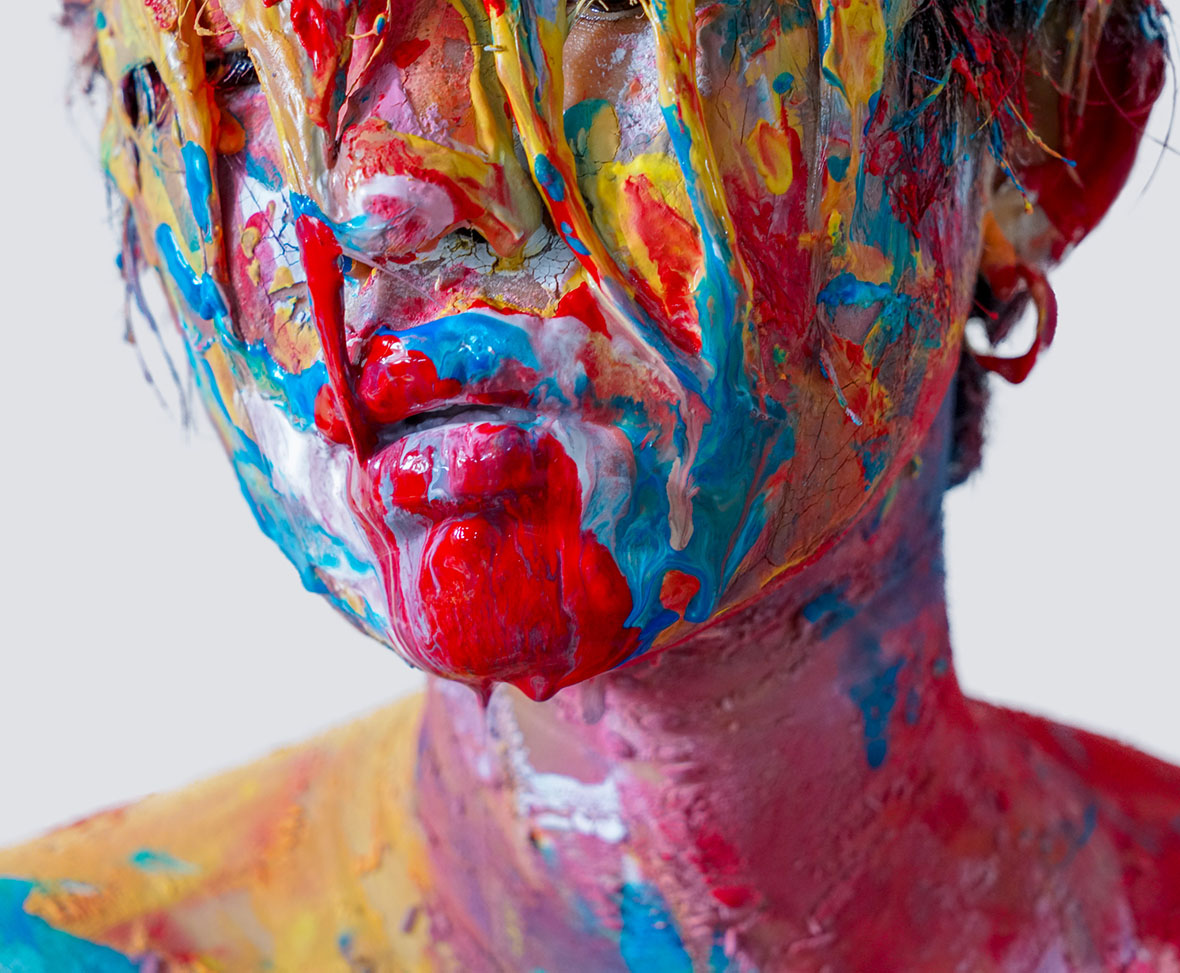
In 2019, Shintaku received her master’s degree from the Kyoto University of Art and Design. In the same year, she held two solo exhibitions in Kyoto and Tokyo, and in both live performances, she spent four to six hours per day drenched in wet paint. It wasn’t particularly pleasant for her. For the project, she doused herself with a mixture made from starch powder and paint, letting the concoction dry and harden on her skin. During this part of the process, she must remain motionless in a chair for 30 minutes so that it can settle. With each layer of color, she repeated the process. The starch, being water-soluble, adds a sense of viscosity to the layers and has the added benefit of being easier to clean, coming off with a simple shower.
“The starch reduces the stickiness of the paint, so as the paint dries, it gradually peels off your body with each breath you take and each minute movement,” she describes. “It almost feels like you’re shedding your own skin.”
2019年,加奈子刚刚获得京都艺术设计大学艺术设计研究生院的硕士学位,同年在京都和东京,她还举办了两个个展,展览期间她每天会有 4 到 6 个小时全身涂满颜料呈现自己这件“作品”。整个过程听起来并不享受:加奈子需要先把淀粉混入颜料中,制成一种特殊的“涂料”来倾倒在自己身体上,让它在体温下逐渐干化变硬,持续大约30分钟。这个过程里,她必须一动不动地坐在椅子上。涂料变干后,加奈子会继续这个过程,然后又坐下来。
“马铃薯淀粉降低了涂料的粘性,因此随着涂料干燥的过程,自己的呼吸和轻微的运动会逐渐将其从身上剥离。”加奈子形容这种感受时说,“这就像皮肤在剥落。”
Shintaku grew up in a troubled family and was a victim of domestic abuse, as such, these weighted issues—among others—are often touched on in her work. As she puts it, the act of covering herself with paint is an affirmation of sorts, a way of letting herself know that she’s still alive.
Prior to using her own body as the medium, she experimented with 3-D art, but the digital sculptures she created weren’t creatively satisfying. She believed that what she sought to express had to be done on a medium that was “alive.” In the end, her own body seemed like the natural choice. With her skin as the canvas and multilayered approach to painting, she sought to create a sense of depth. “By using my body and mind as key aspects of my art, I’m both expanding myself and escaping from myself,” she states.
清理的过程并不难。由于淀粉溶于水,可以毫无障碍地洗去一身油彩。这可能也是加奈子之所以用这样的方式创作艺术的原因——浓墨重彩加之于身,但她依然可以做到出淤泥而不染。
新宅加奈子成长于一个“麻烦重重”的家庭,童年时期遭受虐待的经历,让她不断在作品中寻求更深层次的议题——比如生命的力量、自我的界限。这种把色彩加诸身体的表达方式,是加奈子“确认自己还活着的一种行为”,而倾倒在身上的涂料则延展了她感官的界限。过去加奈子也做过一些三维艺术品,但她当时的感觉是,最终的雕塑应是一种具有生命的东西,例如人类或植物,单纯的媒介并不能很好地传达加奈子想要表达的内容。于是在最后,加奈子认定了用自己的身体来成为作品的“容器”,用自己的皮肤取代画布,并试图在其中创建层次感。“我一直在用自己的身体和思想作为作品的一部分,并由此扩展和脱离自我。”加奈子说道。
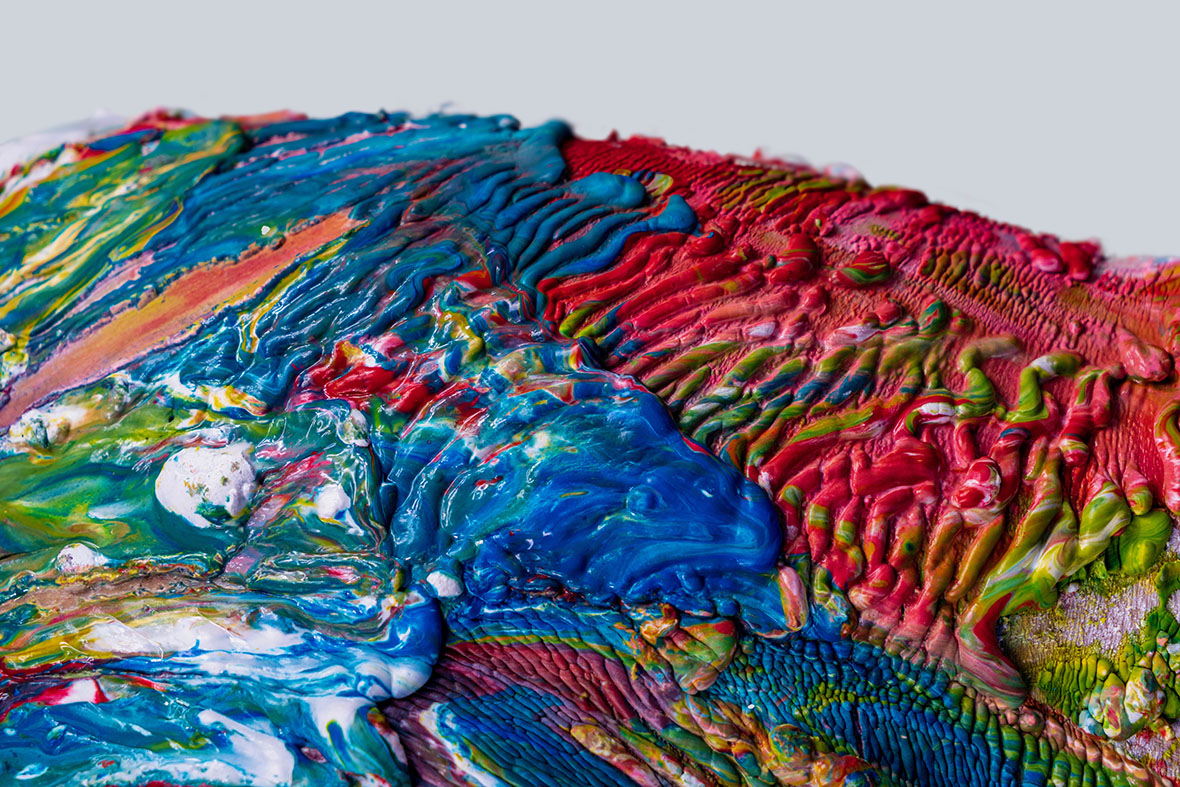
The delicate threshold between life and death is one Shintaku has long been fascinated by, and something she’s experienced herself. She describes it as being “biologically alive, but being uncertain of whether she’s truly living.” This state, in which reality and a person’s feelings seem mismatched, is what inspired her to work so heavily around the theme of life and death. At a time when suicide rates in Japan remain high, she believes it’s a necessary topic to bring to light. “If we want to renew our lives and the environment we live in, we need to update our definition of ‘death,'” she says. “It’s a topic I’m eager to express with my own body.”
加奈子说她曾体验过生死悬于一线般的感觉,“那种感觉自己处于生物学上应该还活着的状态,但我不知道究竟是活着还是死了。”这种“精神和身体似乎处于分离”的不稳定状态,让加奈子的作品有个了统一的抽象主题:生与死。在日本的自杀率居高不下的现在,加奈子敏感地认识到了这个议题的必要性。
“如果我们要更新自己的生活以及我们所处的环境,我认为我们需要同时思考和更新关于死亡的信息。而我想通过我的身体来探索和表达它们。”加奈子说道。
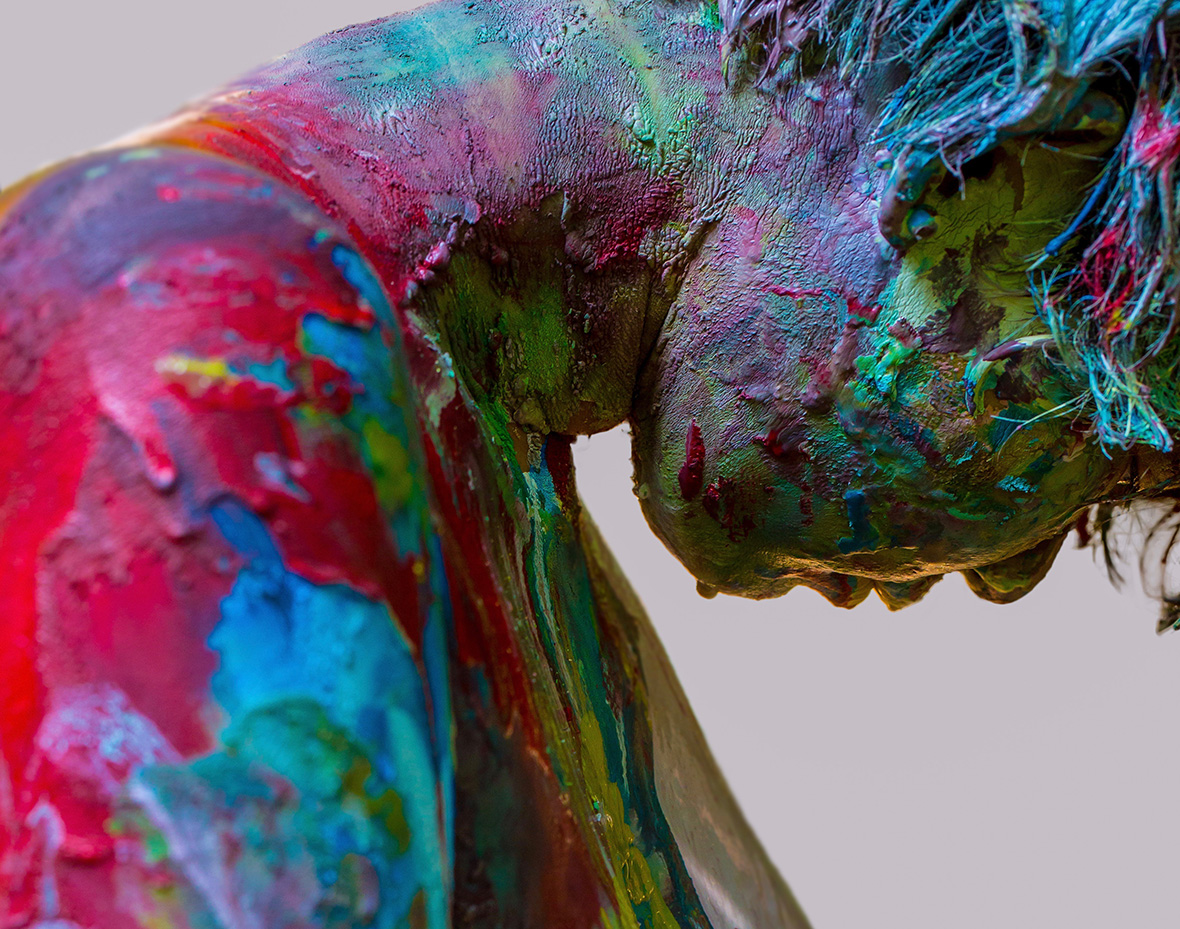
Like our stories? Follow us on Facebook and Instagram.
网站: shintakukanako.com
Instagram: @____.49
Contributor: Chen Yuan


